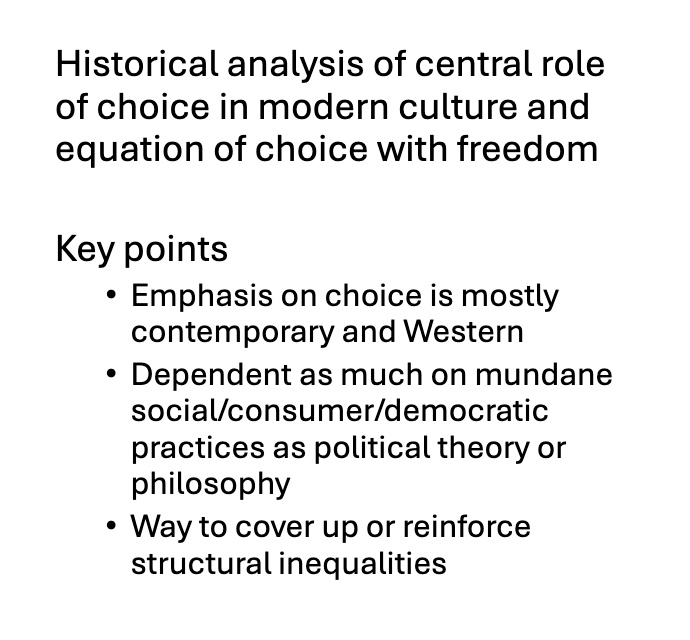Rationality
1/31
There's no tags or description
Looks like no tags are added yet.
Name | Mastery | Learn | Test | Matching | Spaced |
|---|
No study sessions yet.
32 Terms
Enlightenment
philosophical movement in Europe 17th and 18th centuries
caused by scientific revolution, rise of bourgeoisie, and weakening of traditional authority, printing press, age of exploration
led to further scientific development, academic institutions, political revolutions, and modern liberal state
core ideas:
reason as a way to acquire knowledge
political, economic, and religious liberty
focus on human agency and belief in human potential
knowledge
acquired through reason, including knowledge of humans, society, and what is good
approaches:
rationalism
empiricism
hybrid approaches (kant, pierce)
rationalism
innate truths independent of experience & deductive reasoning from these truths lead to knowledge, as in mathematics
empiricism
knowledge comes from sensory experience & inductive reasoning from these experiences can lead to further knowledge (e.g scientific experimentation)
liberty
descriptive and normative claim about human choice & foundation of political position of liberalism which emphasizes individual rights, free markets, democracy, and secularism
negative and positive liberty (agree on need to ensure political freedom, but not psychological freedom [acting on true preferences])
negative liberty
absence of coercion → liberal state must ensure citizens do not coerce each other except to protect liberty
positive liberty
presence of self direction and autonomy → liberal state must promote positive freedom by giving citizens capability to act (e.g through education)
The Human
foundation for philosophical & cultural movement of humanism
places individual human @ center
human capability to acquire knowledge through reason, act rationally, and improve both personal and social wellbeing
secular justifications for political and moral positions
belief in human equality
art and philo that explore human concerns, including meaning of life and role of personal choice in meaning
enlightenment and choice
individual choice matters
can be done rationally
can be used to promote individual and social good
can be foundation of moral, political, and cultural worldview
concepts of value
perfectionism & pluralism
based on enlightenment ideas
perfectionism
society should promote good life, typically developing human nature
focus on human development
linked to positive liberty and institutions like public education
pluralism
different values can be justified and society should wish for us what we wish for ourselves
religious tolerance & political freedom
justification for liberalism and especially negative liberty
political system should allow for coexistence of diff values
rational choice theory
basis for (often liberal) normative claims from these disciplines
individuals are rational decision makers → have coherent preferences that they implement their choices in informed and deliberate manner
rational choice as pillar of individual and social analysis
utilitarian foundations
human behavior driven by rational pursuit of utility and societies should aim to maximize utility of their members
hedonic calculus
Bentham’s approach to calculating net pleasure of action:
intensity: power of action
duration: how long does pleasure/pain last
certainty/uncertainty: is it likely to result in pain/pleasure
propinquity/remoteness: how near is it?
fecundity: is it followed by sensations of the same kind
purity: what is the chance of sensations followed being opposite kind
extent: how many people does it affect
non-hedonic conception of utility
value pluralism: people can rationally pursue diff goals even if they don’t maximize happiness
revealed preference: rational is to maximize utility & since people are rational, max utility is whatever revealed by choice
ordinality: we cannot observe or compare cardinal utility (how much/little utiltiy an action brings) only their ordering
consequentialism
utilitarian: happiness matters, how it is attained is irrelevant
rational choice theory: utility (hedonic or not) assumed to depend on end outcomes rather than processes to attain those outcomes
descriptive and normative claims
choice
act involving selection of a choice object from a set of available objects
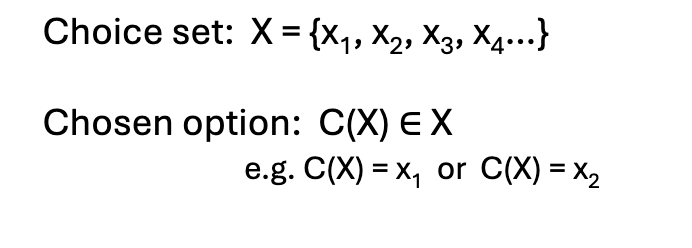
rational choice theory
people have stable and transitive preferences
make choices by satisfying these preferences
choose object they prefer most
preference: attitudes towards choice objects represented using preference relations

stability: preferences not sensitive to context and are independent of various irrelevant situational factors such as how choice is presented

transitivity:

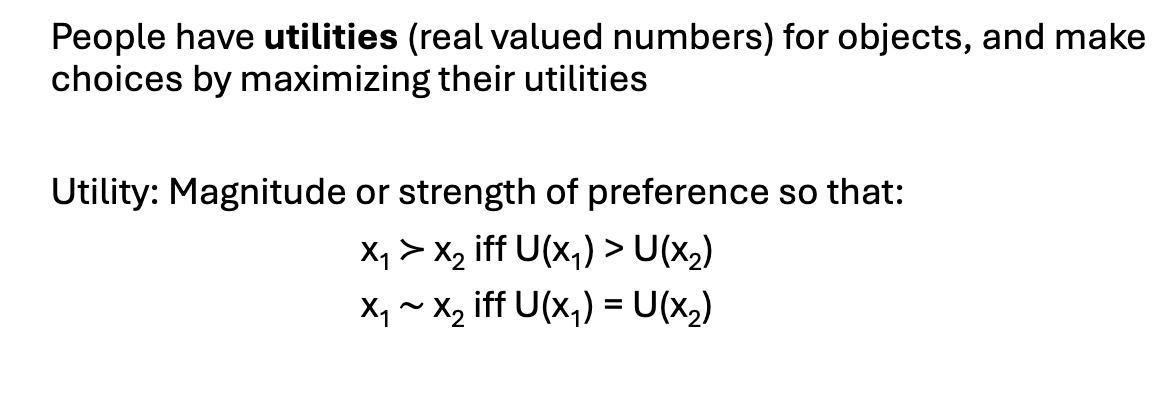
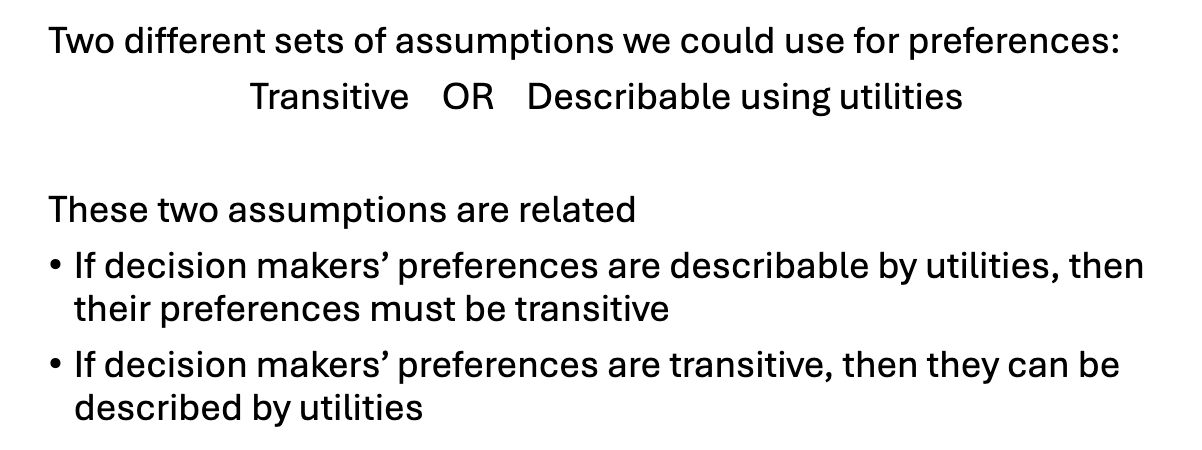
economic choice
ability to use utilities to describe preferences allows us to rigorously study optimal choice between goods and services with differing monetary costs

can analyze choices of consumers, businesses, and workers, market equilibria, and changes to equilibria as function of cost
strategic choice
ability to use utilities to describe preferences allows us to rigorously study optimal choice in games (strategic interactions w/ others)

can analyze not only actual games, but also strategic behavior in markets, law and regulation, political strategy, language, and evolution
revealed preference
RCT often associated w:
individual preference (utility) synonymous w well being
choices always maximize preference and wellbeing
choices reveal wellbeing and used as basis for normative analysis (analysis of what is best for individuals and societies)
normative analysis derived from revealed preference attempts to address fundamental questions about fairness, efficiency, and justice (social choice theory)
Pareto optimality



extremely weak definition of social welfare, since it does not make any assumptions about magnitude of utility experience by each individual
social welfare functions
observe individuals utilities from allocation, then we can define social welfare functions that aggregate these utilities into social utility

more choice

invisible hand
Fundamental theorems of welfare economics: A competitive
market leads to a Pareto optimal allocation of resources, and any
Pareto optimal allocation can be supported as a competitive
equilibrium
Intuition: If there were any way to make someone better off without
harming others, people would have an incentive to make that trade
coase theorem
In the presence of externalities, a competitive market will lead to a
Pareto optimal allocation, regardless of initial allocation of property
and responsibility for the externalities (externalities are indirect
costs or benefits to uninvolved third parties, like pollution)
Intuition: Bargaining (just like the free trade in an economy) can be
used to reach agreements that are Pareto optimal
arrow’s impossibility theorem
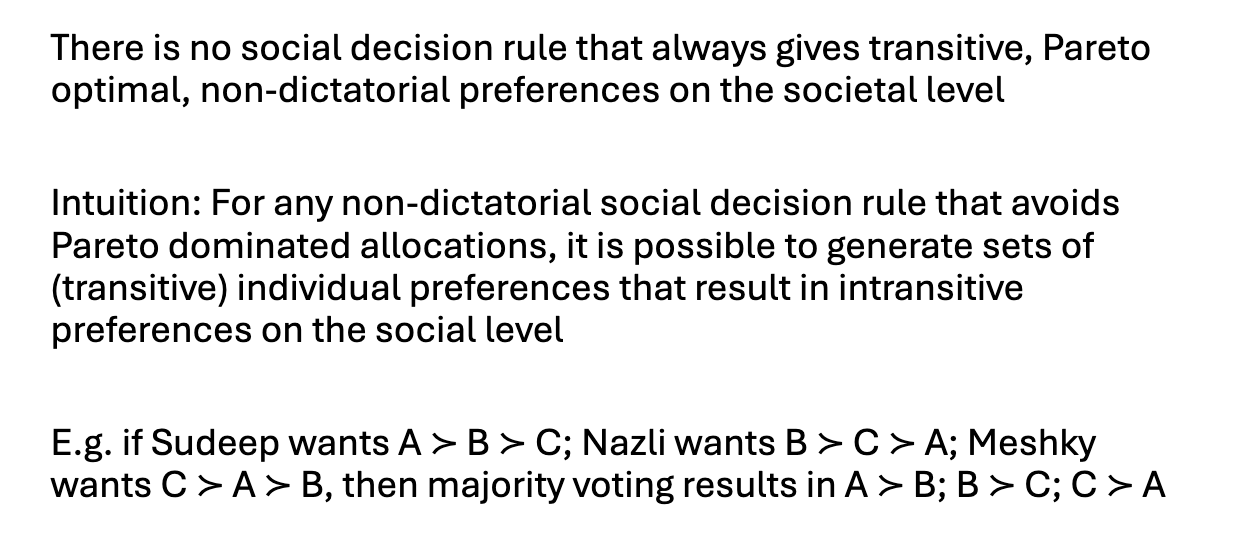
mediam voter theorem
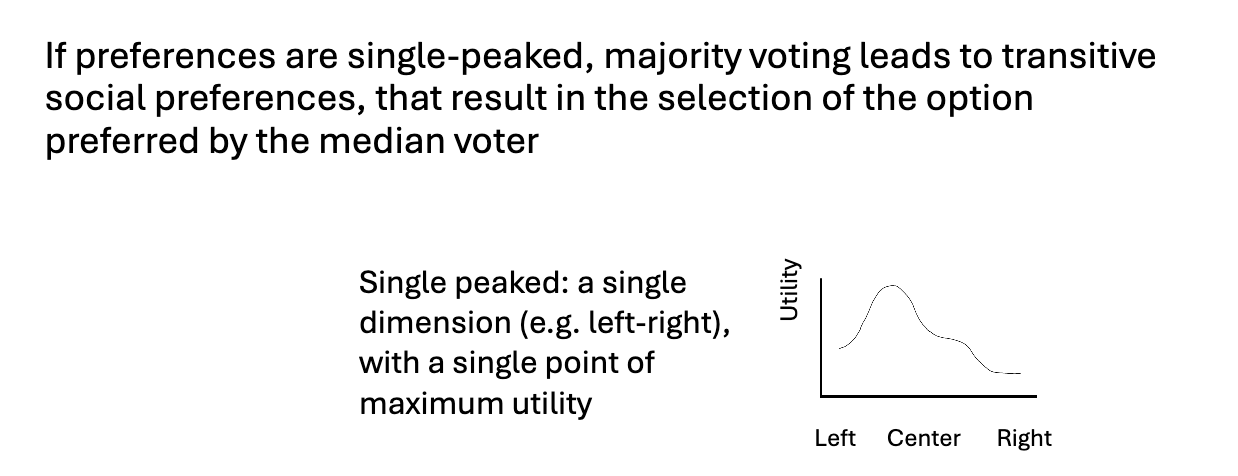

Becker’s Rational Analysis
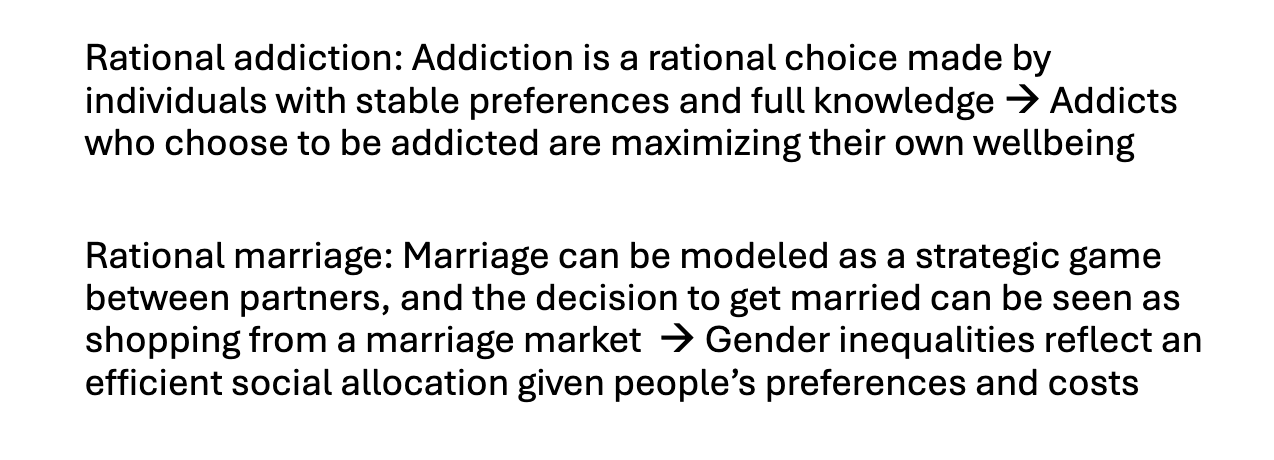
Free to Choose
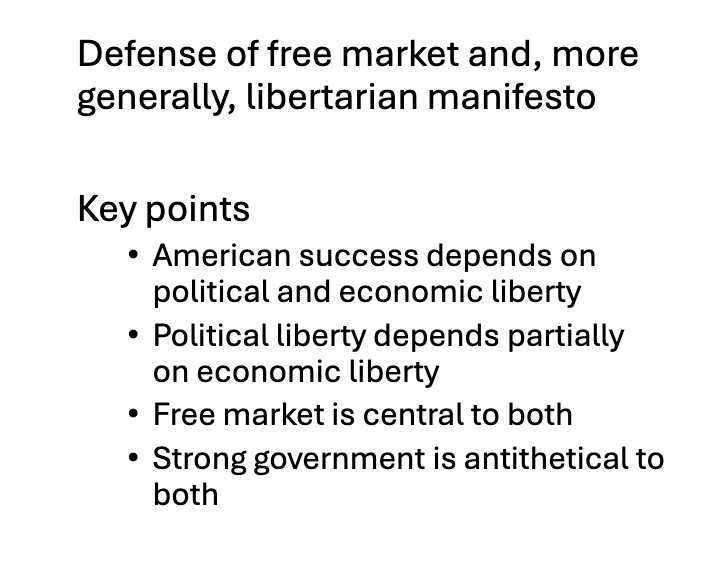
The Age of Choice
